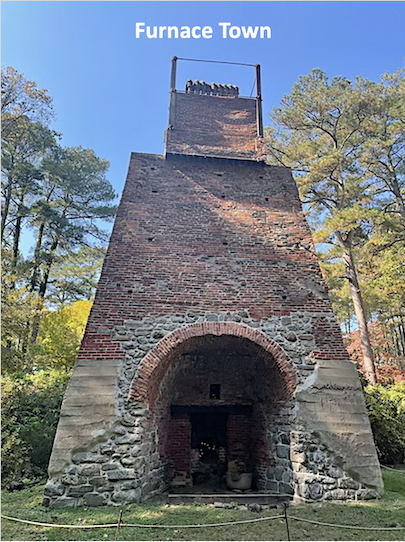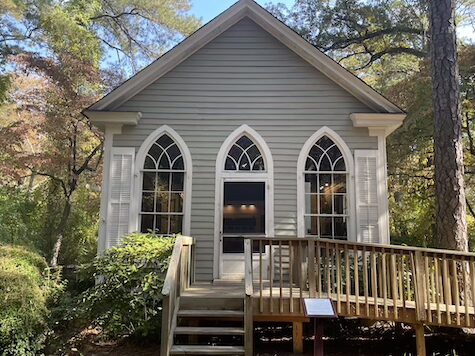Mark’s Score 8.7

Furnace Town is a recreated historic village, located along the Nassawango Swamp just north of Snow Hill on Route 12. The works were owned and run by the Maryland Iron Company, which was in operation for a relatively short time, 1828-1850. In 1850 the company went bankrupt and town of 300 souls that had sprung up around the works was eventually reclaimed by the swamp. The only structure to survive to this day is the iron furnace.
Bog iron develops in swamps via biochemical oxidation. The iron emerges through ground water springs and becomes ferric hydroxide (bog iron). The furnaces converted this ferric hydroxide to usable industrial iron that was exported to foundries in Philadelphia and Baltimore.
In the 1960s the Worcester County Historical Society began a restoration at the site. In 1982, the Furnace Town Foundation was formed to continue the restoration work, and manage the historical museum that exists today.

I’d been meaning to visit Furnace Town for a long time. I finally made the journey on a beautiful warm sunny autumn day. It is near the end of the season for them, they close on October 31st, so I had the place to myself. The original structures, save the furnace, have long since been destroyed. So, if you were expecting a 19thcentury industrial company town, you are not going to see that. There are currently ten structures, in addition to the original furnace, on the site. All of them had been moved to this location from towns and villages around the lower eastern shore. Most of the structures at the site are from a time period after the furnace was shut down. Consequently, you are not going to get a sense of what life was like for the people who lived and worked at the ironworks. But none-the-less the accumulation of these structures on this location does give you a sense of how the people (generally) of Delmarva lived and worked in the latter half of the 19th century. But the focus is far more rural and agriculturally oriented than would have been the case for the people who lived and worked at this industrial complex in the first half of the 19th century.
The furnace itself, though, was fascinating. The site also highlights some of the canal work that was required to transport bog iron to the site and usable iron out of the site. There are also several trails that take you through the swamp where the bog iron was collected. The signage explaining what you were looking at and its significance is well done.
At the end of the day, I have to say Furnace Town was well worth the visit and I very much enjoyed the display of houses and workshops in a wooded setting. I would definitely come back. If I had a critique, it would be that I would have liked to learn more about the lives of the people who lived and worked at this site 200 hundred years ago.

Leave a Reply